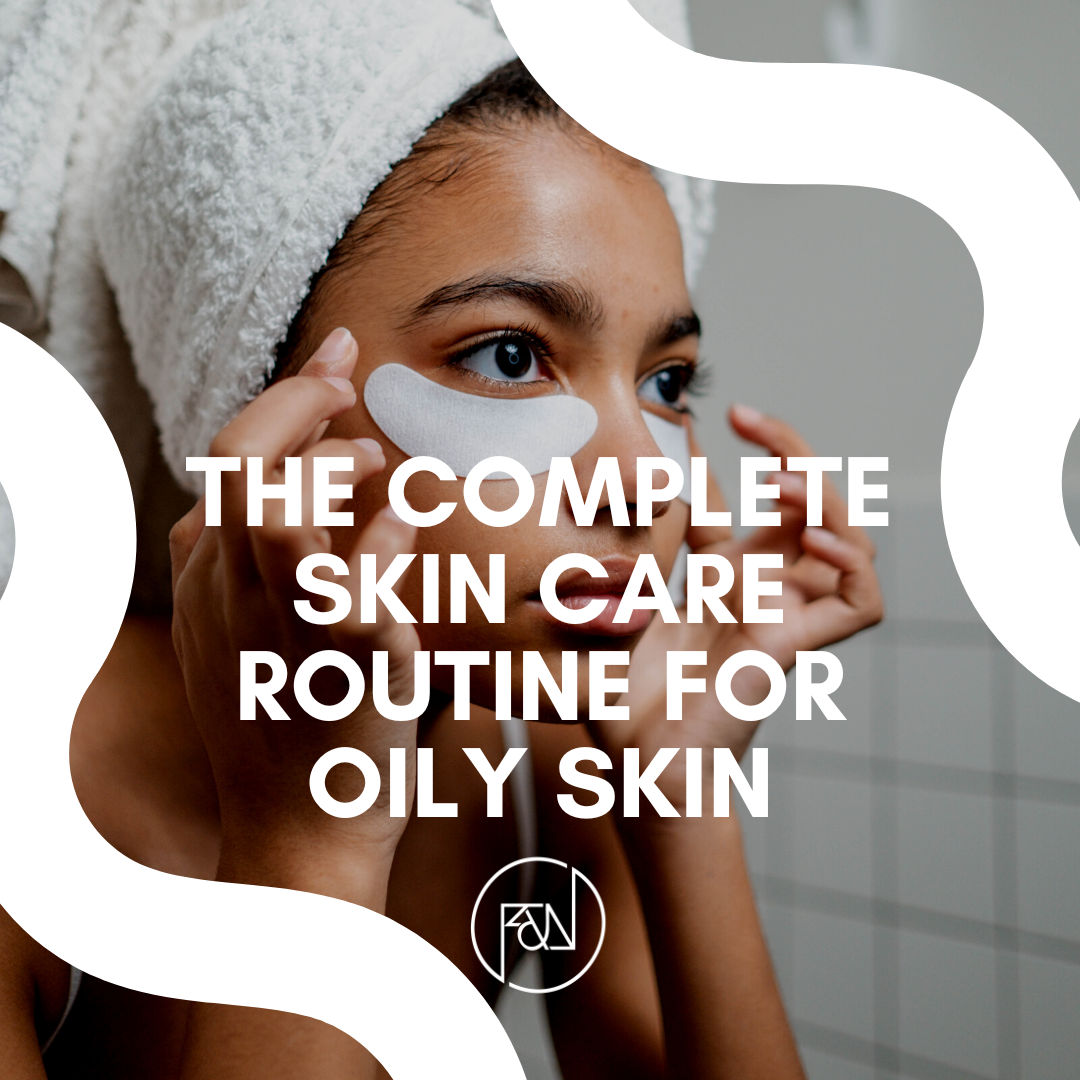
The Complete Skin Care Routine for Oily Skin
Share
When it comes to having a skin care routine it is important to cater it to your skin type. If you have oily skin this is going to be your complete guide. Oily skin comes from the sebaceous glands in the skin that make too much sebum. Sebum is the waxy, oily substance that will protect and hydrate your skin. Sebum is important for keeping our skin healthy. Oily skin happens when there is too much sebum. Too much sebum causes your pores to be clogged and can lead to acne and blackheads. Oily skin leads to you often having a shiny appearance and enlarged pores. If you have oily skin, having a consistent skin care routine will take you a long way.

Step 1: Cleanse
The first step in every skin care routine regardless of the skin type is to cleanse. You always want to wash your face with a cleanser when you wake up and before you go to sleep at night. The best type of cleansers to use for oily skin would be a gel or foam cleanser. Foam cleansers are made with a foaming agent causing them to bubble as you apply it to your skin. The foaming is perfect for oily skin because it helps get rid of an over abundance of oil & sebum on the skin. The only downside to foaming cleansers is that it can strip your skin of its natural oils and dry your skin out after cleansing. Gel cleansers are way thicker than foam cleansers. Gel cleansers cleanse the skin without stripping your skin of its natural skin oils. Gel cleansers are usually water-based, helping the skin stay hydrated after cleansing. The Boost & Brighten Vitamin C Cleanser is a gel cleanser perfect to add to your oily skin care routine! It leaves your skin clean and bright without stripping or drying out the skin barrier. Gel cleansers also are usually made with mild ingredients and this cleanser has ingredients such as horsetail, borage, and organic aloe and gotu kola. These ingredients help with sun spots, discoloration, dullness and free radical damage that comes from prolonged sun exposure.

Step 2: Tone
After cleansing your skin, you want to go over your face with a toner. Because you are dealing with oily skin, you may think drying out your skin is the goal but it is not. You want to find an alcohol free toner as most astringent toners that contain alcohol tend to dry out the skin. When it comes to oily skin, toners are crucial as they provide the skin with a deep cleanse and help balance your complexion. Natural astringents that are alcohol free help soothe the skin, such as the Vitamin C Resurfacing Toner which is a perfect fit for oily skin as it controls excess oil and refines the appearance of pores. This is a toner that will moisturize, resurface, brighten, and enhance the appearance of youthful elasticity in skin. To visibly brighten and smooth the texture of the face, this toner's potent formula treats dark spots, fine lines, and wrinkles. Now, although toners should be in your oily skin care routine, it is not necessary as some may find that toners make their skin itch or feel irritated. Another alternative would be witch hazel as it has a high tannin content, making it a natural astringent and also anti-inflammatory. This is commonly used as a toner for those with oily skin as it is more soothing to the skin.

Step 3: Serum & Moisturize
The third step in your oily skin care routine would be to moisturize. Those with oily skin tend to avoid moisturizing but this step can be the one thing your skin care routine is in need of. After toning the skin, you can go in with a serum, which is applied before you put on your moisturizer. Serums like the Bright Side Serum have many beneficial ingredients like Vitamin C and Hyaluronic Acid that are hydrating and leave very little emollient residue making it a go-to addition for those with oily skin. If you choose to include serums in your routine avoid serums that are heavy, oil-based, and may contain botanical seed oils. After you tone your skin you want to moisturize whether you use a serum or not. It’s usually best to look for an oil-free moisturizer as it will stop the skin from feeling greasy. Aloe vera is a good moisturizer on its own for treating oily skin but also works as an active ingredient in moisturizers, one being the Super Glow Gel Moisturizer. After you have applied your serum and moisturizer, it is important to follow up with a sunscreen that’s at least SPF 30 or higher. The best sunscreens contain zinc oxide and titanium oxide and are typically lotion- or gel-based. If you feel that all the preceding procedures are too much layering and are making your skin feel greasy, you may also want to choose a matte sunscreen. The matte finish sunscreen will assist to control the excess grease.

Weekly Steps: Exfoliation & Masks
Another part of your oily skin care routine must be exfoliating and applying facial masks. These should not be a part of your daily routine but incorporated into it weekly. You should exfoliate no more than 2 to 3 times a week. Doing an enzyme mask such as the #NOFILTER Enzyme Mask, once a week will also help minimize the look of pores and decongest clogged pores caused by the buildup of excessive sebum. Another option would be the Earth & Ocean Acne Fighting Mask as it is a Kaolin Clay mask that absorbs excess oil while gently exfoliating and minimizing pore sizes.

Oily skin can definitely be a hassle but now that you know the right steps to incorporate into your skin care routine, you can finally say goodbye to that greasy feeling. The products mentioned in this routine are just recommendations but you have to find what works best for your skin.
